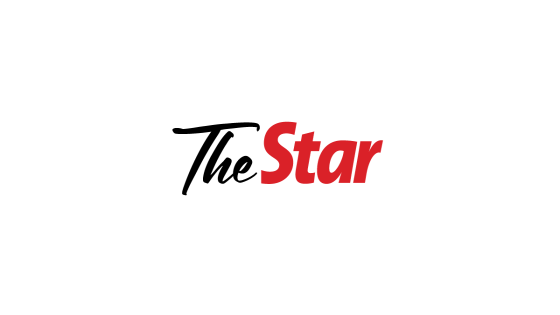By Mei Mei Chu
BEIJING (Reuters) – China is awash in unwanted milk as falling birth rates and cost-conscious consumers have cut demand even as dairy farms expanded in recent years, forcing smaller farmers out of business and squeezing shipments into the world’s top importer.
China’s milk surplus illustrates the unintended consequences of Beijing’s food security-driven efforts to boost its dairy sector by touting consumption and encouraging expansion. High costs and the legacy of an adulteration scandal in 2008 that killed at least six children and hospitalized thousands, meanwhile, limit its export opportunities.
Weighed down by a sluggish economy that has weakened demand for higher-priced foods like cheese, cream and butter, as well as an aging population, Chinese milk consumption fell from 14.4 kg per capita in 2021 to 12.4 kg in 2022, the last year for which data from China’s statistics bureau is available.
At the same time, milk output in China, the world’s third-largest producer, surged to nearly 42 million tons last year, from 30.39 million tons in 2017, surpassing Beijing’s 2025 target of 41 million tons.
Chinese milk prices have fallen since 2022 to below the average production cost of around 3.8 yuan ($0.5352) per kg, causing many loss-making farms to shut and other farms to shrink their herds by selling cattle for beef – another oversupplied market.
Modern Dairy, one of China’s major producers, reported a halving of its dairy cattle herd in the first half of this year, posting a net loss of 207 million yuan ($29.07 million).
“Dairy farming companies are losing money on selling milk and selling meat,” said Li Yifan, Head of Dairy (Asia) at commodity financial services firm StoneX.
Chinese dairy imports, mainly from New Zealand, the Netherlands, and Germany, dropped 13% year-on-year to 1.75 million metric tons in the first eight months of this year. Milk powder, the top dairy import, was down 21% to 620,000 tons, China customs data shows.
Net dairy product import volumes in 2024 are likely to fall by 12% from a year earlier and “the extended dairy downcycle may continue to impact import volume in 2025,” Rabobank Research said in a note last month.
China’s dairy industry mushroomed after Beijing’s 2018 call for more farms and higher output, part of the wider push for greater food self-sufficiency, spurred a proliferation of farms and imports of hundreds of thousands of Holstein cattle to stock them.
But in addition to the slowing economy, a drop in births has meant fewer babies need milk formula. China’s 2023 birth rate was a record low 6.39 per 1,000 people, down from 12.43 in 2017, according to government data.
China’s infant formula milk market declined by 8.6% in volume and 10.7% in value during the 2024 fiscal year that ended in June and may decline further in 2025, New Zealand’s A2 Milk Company, which sells infant formula in China, said in August.
China’s dairy industry has also struggled to meet Beijing’s 2018 call to educate consumers to move from drinking milk to “eating milk” to increase dairy consumption.
Liquid milk makes up 80% of China’s dairy consumption, and efforts to develop a market for cheese, cream and butter, turning milk into higher-value products with longer shelf life, have been stymied by belt-tightening consumers.
What do older, smaller populations mean for the global economy? Listen to this week’s episode of Reuters Econ World podcast.
To manage the excess output, China’s producers are turning raw milk to powder, creating a surplus by the end of June of more than 300,000 tons, the China Dairy Association said, roughly double the previous year’s level.
China is also trying to export whole milk powder but that potential is limited by the memories of the adulteration scandal, said StoneX’s Li, and even many Chinese consumers prefer foreign brands despite government efforts to improve food regulation and boost confidence.
China exported 55,100 tons of dairy products in the first half of 2024, up 8.9% annually but just a small share of its surplus.
Chinese dairy farmers’ reliance on costly animal feed means their production costs are almost double those in top exporter New Zealand, where cattle graze in pastures, according to StoneX calculations.
The domestic oversupply has made it easier for Beijing to target imports of European Union cheeses, milks and creams in a trade dispute with the bloc, although those are niche products and the measure will do little to ease the glut.
“While limiting EU dairy imports may provide short-term relief for Chinese farmers, it will not address the deeper problems such as overproduction and stagnating demand,” said Tanya Bhatia, a consumer goods research analyst at the Economist Intelligence Unit.
In the longer term, suppliers still see opportunity in China.
Charlie McElhone, general manager of sustainable dairy at industry body Dairy Australia, said it sees significant growth potential in China, which remains its biggest market.
“We still see cheese expanding in the future,” he said.
($1 = 7.1007 Chinese yuan renminbi)
(Reporting by Mei Mei Chu, additional reporting by Lucy Craymer in Wellington and Peter Hobson in Canberra; Editing by Tony Munroe and Christian Schmollinger)
Source Agencies



